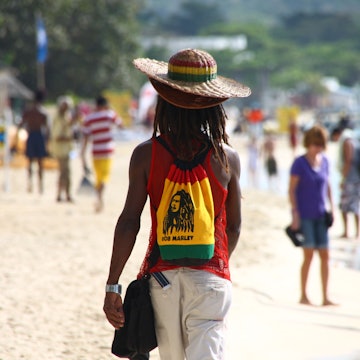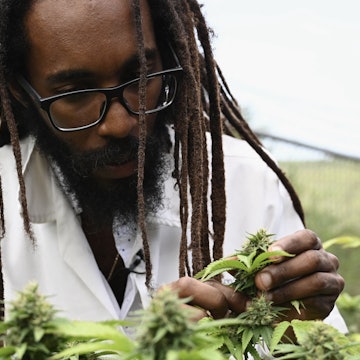

Drinks stall in Ocho Rios, Jamaica. vale_t/Getty Images
“Out of many, one people” isn’t just Jamaica’s national motto; it describes the island’s cuisine. Jamaican cuisine fuses influences from West Africa, Europe, India, China, and the Middle East, shaped by centuries of migration and ingenuity.
With lush mountains, pristine beaches, and a tropical climate yielding fresh fruits year-round, Jamaica offers a vibrant array of flavors in both food and drink. Here’s our guide to what to eat and drink on the island and where to sample each specialty.
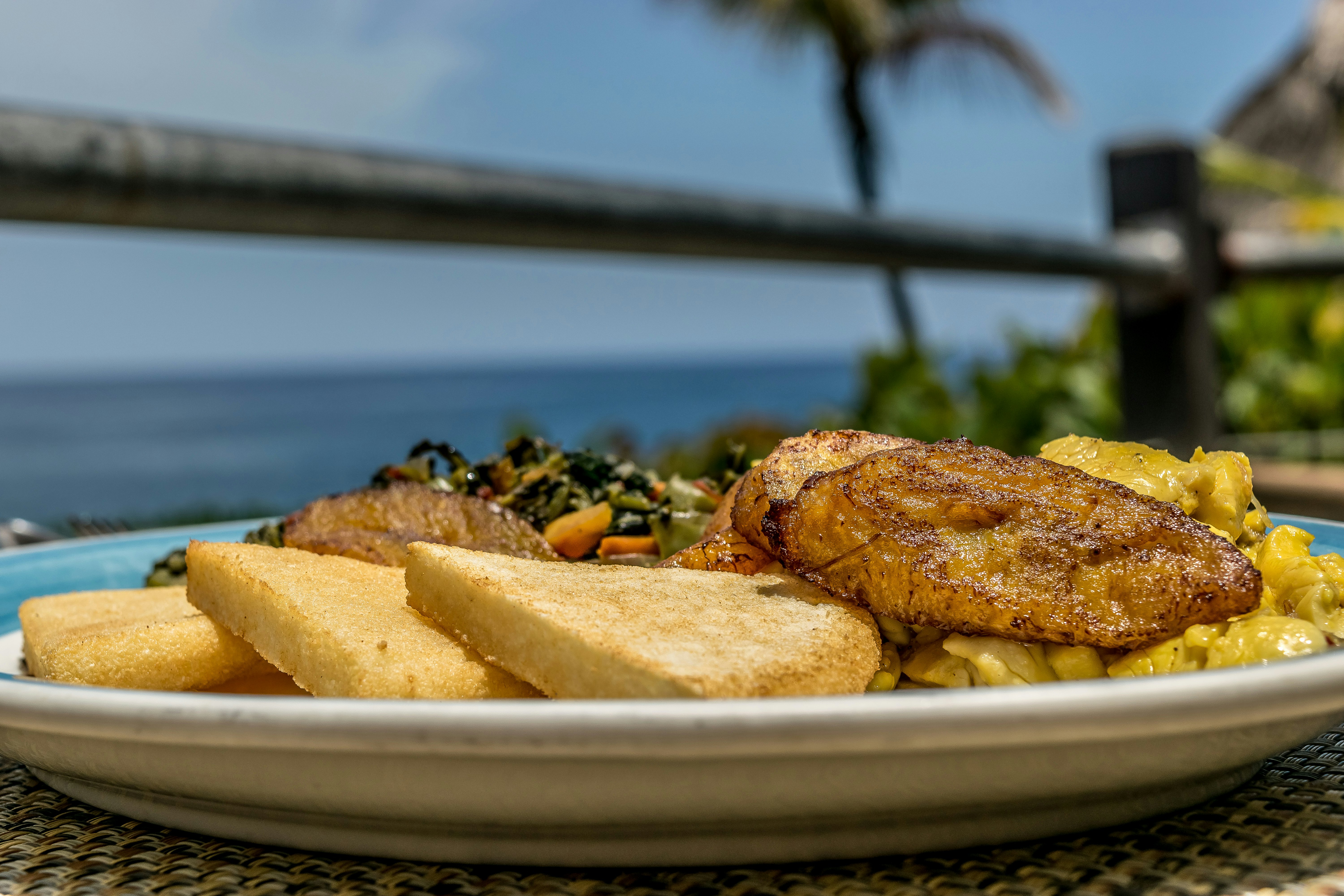
Start the day with ackee and saltfish
Jamaica is one of the only places in the world where the ackee fruit is widely eaten. Bright yellow when ripe, the fruit is boiled, steamed, and sautéed with fresh vegetables, then paired with saltfish (codfish) to create a dish that's a favorite for breakfast or brunch.
Though not native to the island, ackee has deep historical roots. It’s believed to have been brought from West Africa in the 18th century, likely aboard ships carrying enslaved people.
Today, ackee trees flourish across the island and typically bear fruit all year round. Timing is key with this fruit – it's harvested for meal preparation when the pod has naturally opened, revealing three glossy black seeds against a fleshy interior.
Saltfish, traditionally dried and salted in the North Atlantic, was once a staple of long-distance sea travel and trade. Today, it's sautéed with onions, tomatoes and Scotch bonnet peppers before being tossed with cooked ackee to create Jamaica’s national dish.
Ackee can also be paired with corned pork, a rich, fatty cut of salted or pickled pork. Ackee and saltfish or corned pork are typically served alongside fried dumplings, breadfruit, green bananas, bammy, or plantains, making for a complete meal.
Where to try it: Ackee and saltfish appear on nearly every breakfast buffet at all-inclusive and boutique hotels. You can also enjoy it at the Pelican Grill along Montego Bay’s Hip Strip.
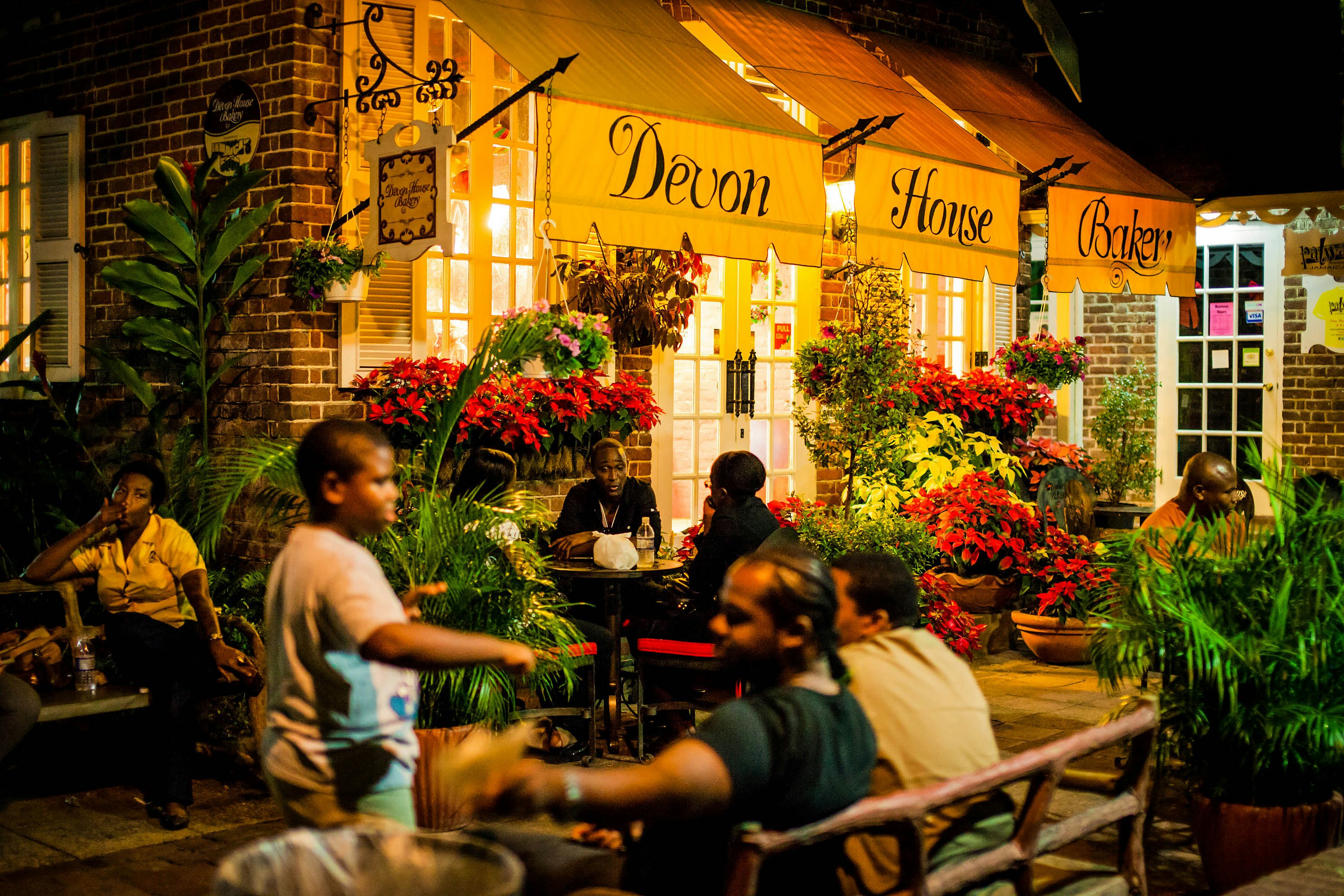
Grab a patty for a tasty bite on the go
The patty – a golden, flaky pastry – is a local staple and top snack. Served hot in a paper bag, it’s perfect for a quick meal between adventures. The Jamaican patty shares roots with the Cornish pasty, introduced to the island by 17th-century British sailors trading in sugar and spices.
Over time, the island gave the pastry, packed with ground beef, a spicy twist with Scotch bonnet pepper, dried thyme and onion.
Today, patties are everywhere. Miniature versions are offered at all-inclusive hotels, while half-moon-shaped patties are sold at local patty shops. The classic beef patty is a must-try, but you’ll also find variations stuffed with chicken (curried or jerked), vegetables, soy, or even ackee for a meat-free option.
Where to try it: You can purchase patties at almost any local patty shop across the island. Try one with soft, slightly sweet coco bread, freshly baked and folded around the pastry like a sandwich. Popular spots include Juici Patties and Tastee, both known for their classic patties and variety. These eateries are located throughout Jamaica, making it easy to find one nearby. If you are in Kingston, head to Devon House Bakery at the historic Devon House heritage site, where the square-shaped patties have fillings like curried goat and lobster.
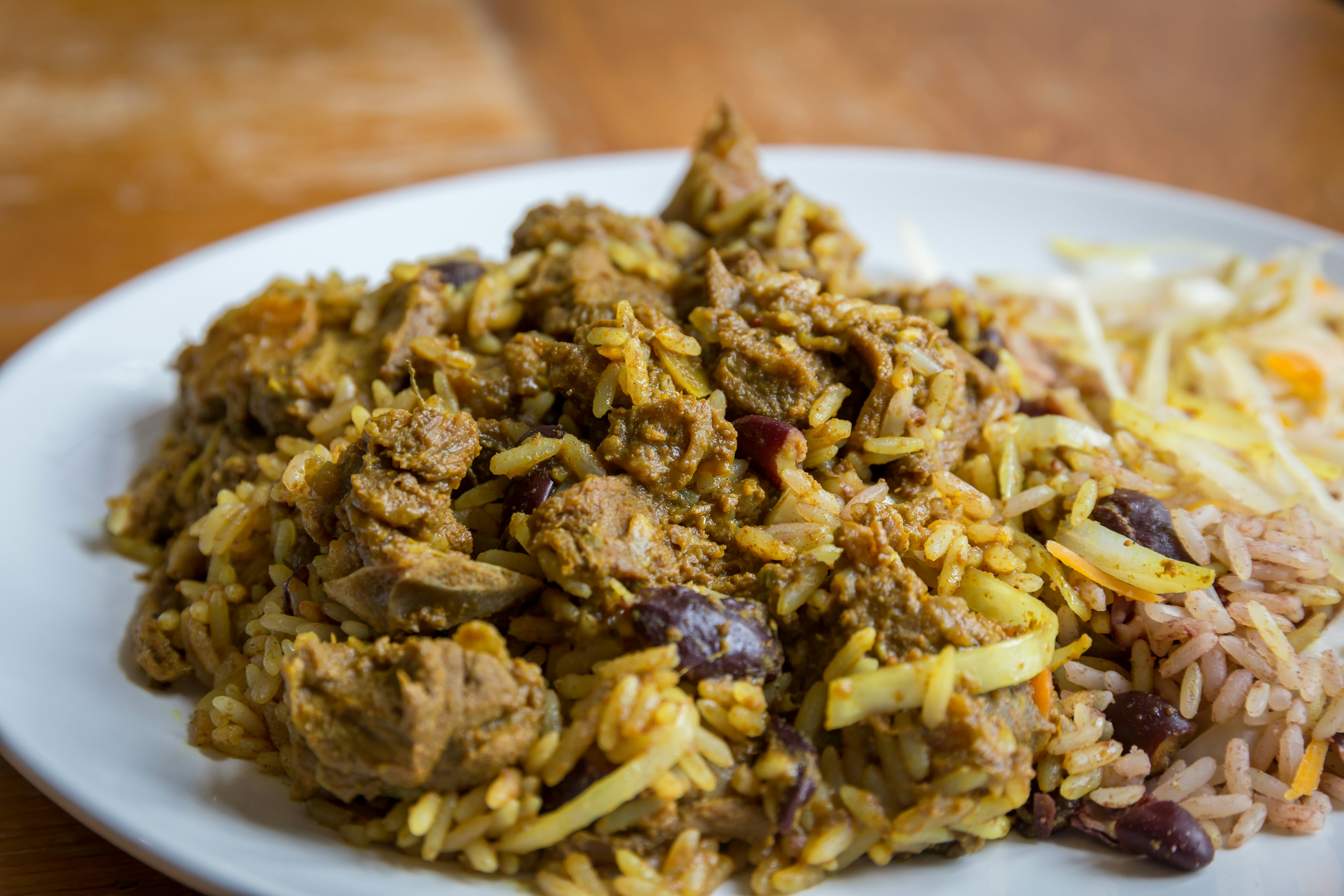
Dig into a dish of curried goat
A staple at Jamaican lunches and dinners, weddings, and big family gatherings, curried goat is a dish that tells a story, one with roots tracing back to the Indian indentured laborers who arrived in Jamaica in the mid-1800s.
They brought with them their spices and cooking techniques, which, over time, blended with local ingredients and flavors to create the dish.
The goat is typically marinated overnight in a mixture of curry powder, thyme, Scotch bonnet pepper, garlic, and other local seasonings, then slowly cooked until tender.
It's typically served with white rice or rice and peas, and often accompanied by steamed vegetables and fried plantains. This creates a hearty, flavorful meal that is filling and memorable.
Where to try it: So popular is curried goat that the meal is on the menu in most places. Murray’s Fish and Jerk Hut in Clarendon, Chillin’Restaurant and Bar, and Sonia’s Homestyle Cooking in Kingston are top picks.
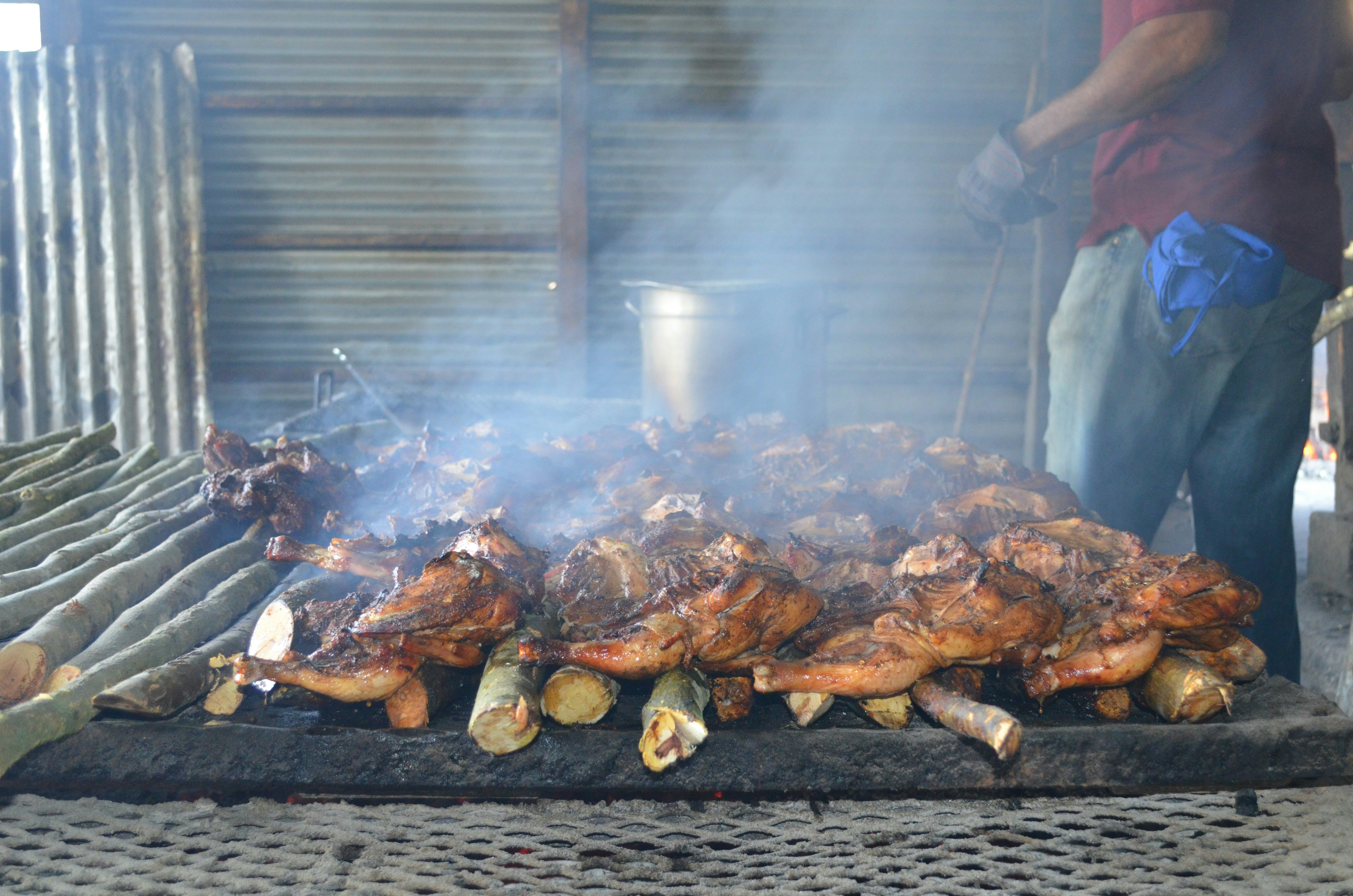
Order a plate – or a foil wrap – of jerk
Jerk is as much about the cooking method as it is about the spices used. The method dates back to the indigenous Arawak and Taíno peoples of Jamaica, who preserved and flavored meat using smoke and spices.
In the 17th century, enslaved Africans who escaped into the mountains, later known as Maroons, used the jerking technique. To avoid detection by colonial forces, they covered their cooking fires with wood, slow-smoking the meat and infusing it with rich, smoky flavor.
Today, jerk involves slow-smoking meat, usually chicken or pork, over pimento wood after marinating it in a mix of Scotch bonnet peppers, pimento, thyme, garlic, ginger and local herbs.
Jerk is most often eaten by hand, especially when served with festival, fried breadfruit, or plantains. If served with rice and peas, a fork and knife are usually used.
Where to try it: You’ll find jerk grills at most resorts, often poolside or on the beach. For a more local option, head to Scotchies in Ocho Rios or Montego Bay, or try PeppaThyme in Kingston.
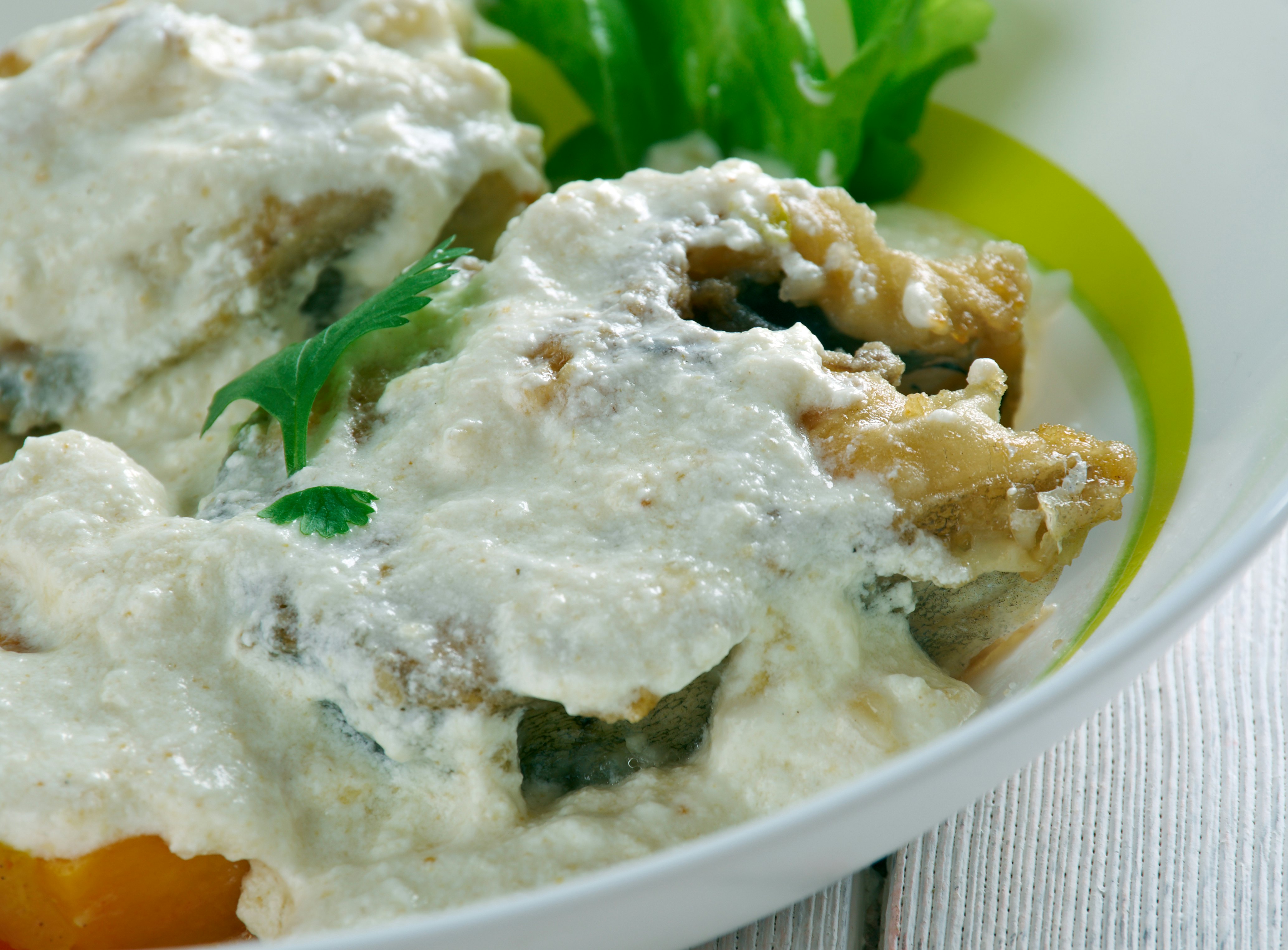
Have rundown, flavored with coconut, for breakfast
Rundown gets its name from “running down” coconut milk by simmering it until it splits, releasing oil and forming a rich base for protein, seasoned with fresh vegetables, herbs and spices. The dish begins with dried coconut, grated from the husk, then squeezed and simmered until it separates into a thick, oily custard.
Salted mackerel, often referred to as “pickled mackerel,” is the traditional pairing, although saltfish and other seafood, such as shrimp, work just as well. It is soaked to tame its salinity, then flaked into bite-sized pieces before being added to the coconut base and cooked with onion, garlic, thyme and Scotch bonnet pepper. Chopped tomatoes or sweet peppers add color and brightness.
Rundown is typically served with boiled dumplings, green bananas or yellow yams. These starchy sides are ideal for soaking up the rich coconut sauce.
Where to try it: You'll find rundown on menus at local eateries across Jamaica. For a reliable plate, head to Miss T’s Kitchen in Ocho Rios.
Spoon up some mannish water
If you spot mannish water as the soup of the day on a local menu, don’t hesitate to try it. This hearty goat soup is a Jamaican favorite, particularly at wakes, weddings and other significant celebrations.
The soup has been simmering in Jamaican tradition for over 300 years, once served at Maroon gatherings – ceremonies held by the descendants of enslaved Africans who fled to the mountains to resist colonial rule.
The base is simple: water and goat parts, all thoroughly cleaned with a mixture of vinegar and water. It’s then boiled with ground provisions like green bananas, yellow yams, and spinners (small dumplings), and seasoned with herbs, spices, and hot pepper. A splash of white rum is sometimes added to finish the pot with a kick.
Where to try it: Head to Father Bull, a local restaurant with locations in Greenwood (on the St James–Trelawny border) and Drax Hall in St Ann.
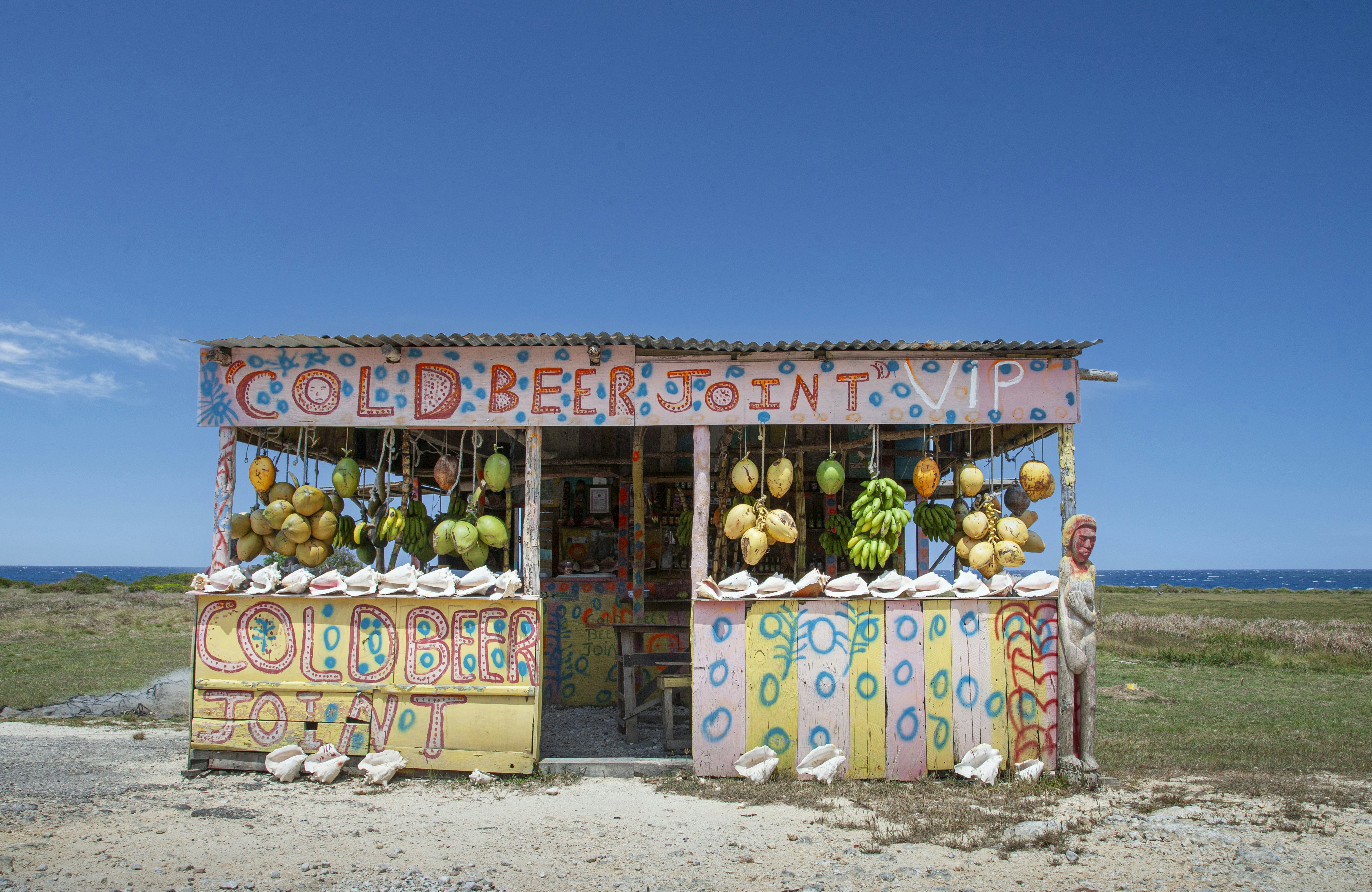
Raise a glass to Jamaican rum and other local drinks
Rum is Jamaica in a glass. It’s been flowing here since the days of sugarcane plantations, and today the island is home to six major distilleries. Whether aged, overproof or white, you’ll find Jamaican rum served neat, in a punch, or mixed with Ting (a tart grapefruit soda) or ginger beer.
If you're not keen on rum, Red Stripe is Jamaica’s most famous lager, easy drinking and always served ice-cold.
For a non-alcoholic option, try sorrel, a drink made from a dark red flower (known as hibiscus flower), ginger and spices. It’s usually sweetened and sometimes spiked with rum, but alcohol-free versions are available at shops and street stalls.
Fresh juice made with local fruits is a staple in many communities. Try coconut water straight from the shell, or blend with guava, June plum, passionfruit or carrot. These are often served in restaurants, sweetened with a touch of cane sugar.
Where to try it: Any beach bar will pour you a rum cocktail, and most restaurants list rums and fresh juices on their menus. A rum tasting is usually part of a rum estate tour as you learn how the molasses-based spirit is made.
Sip your way through the Blue Mountains with coffee
Jamaica is famous for its Blue Mountain coffee, grown at high elevations in the cool, misty Blue and John Crow Mountains. For a memorable experience, consider booking a tour at an estate such as Craighton Coffee Estate or trying the Blue Mountain bicycle tour, which combines stunning views with a hands-on coffee adventure.
You can also sip a cup of coffee at local spots. Just make sure to confirm it’s genuine Blue Mountain coffee, as some cafes serve imported blends.
Where to try it: Visit the Blue Mountains for a bean-to-cup tour at Craighton Coffee Estate, or stop by cafes like Café Blue, which proudly brews coffee made exclusively from locally grown beans.
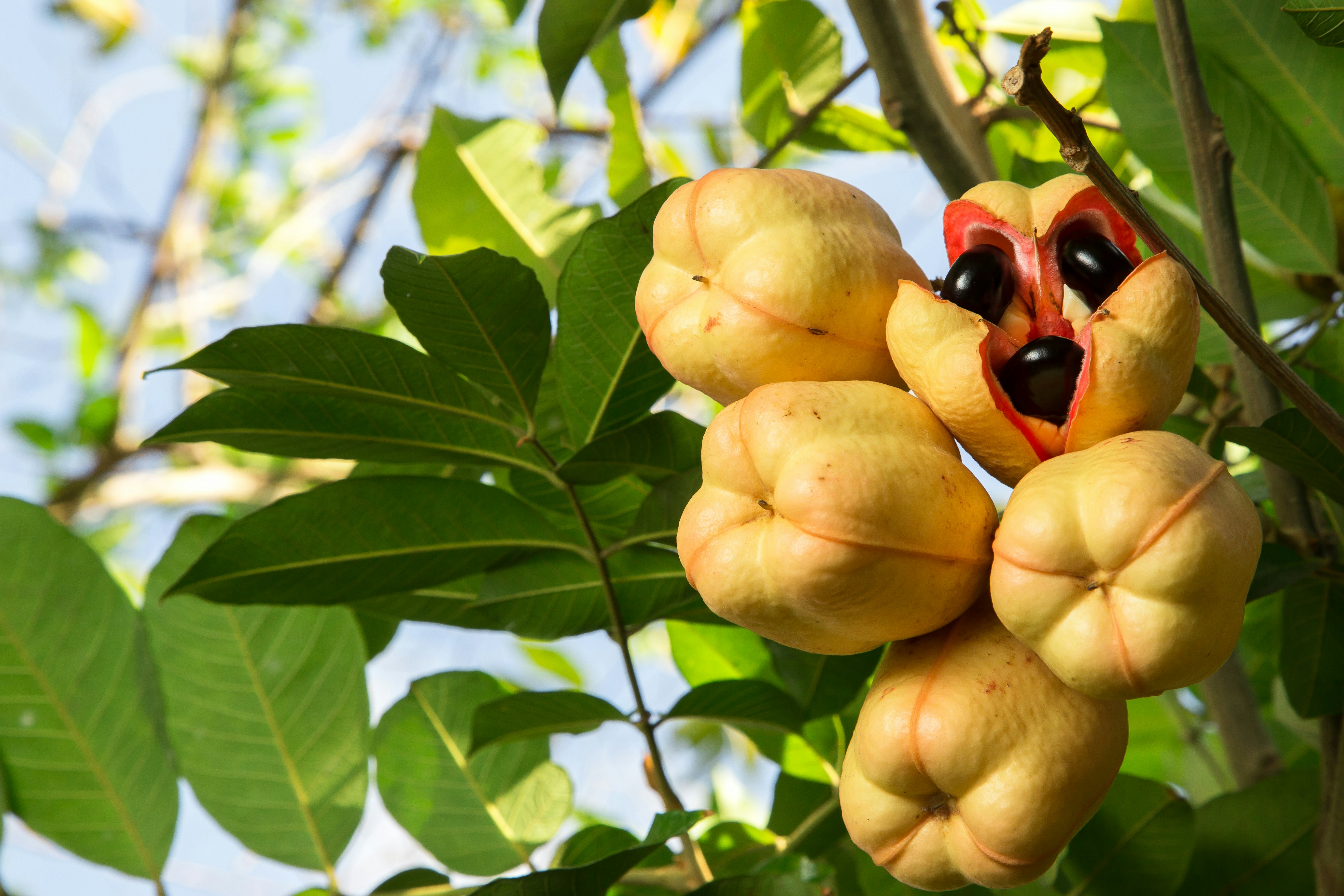
Vegetarians and vegans
While Jamaica is known for spicy jerk and meat stews, the island also has a strong tradition in plant-based cuisine. Rastafari philosophy encourages a natural lifestyle through the I-tal diet with meat- and dairy-free meals a staple of the Rastafarian food culture.
I-tal cooking excludes all animal products, processed foods, alcohol and artificial additives, focusing on fresh local produce.
Local restaurants offer vegetarian and vegan menus, with some fully meat-free. Whether you're plant-based or just want a break from meat, you’ll find plenty of flavorful options.
These include curried chickpeas, often served with boiled green bananas or sweet potatoes, and three-bean stew, a mix of lentils, kidney beans, and broad beans simmered in coconut milk and herbs to make a stew.
Ackee is also a staple among vegetarian options and is often paired with boiled root-vegetables like sweet potatoes or used as a pizza topping with nut-bread, herbs, and sautéed vegetables.
Where to try it: In Ocho Rios, don’t miss a visit to Stush in the Bush. Set on a working organic farm, this farm-to-table experience begins with a tour and ends with a vegetarian feast. In Kingston, head up to Kamila’s Kitchen on Skyline Drive for hearty I-tal dishes and sweeping views from the hills of St Andrew. Kamila’s also has two other locations in the city, making it easy to enjoy vegetarian cuisine in Jamaica’s capital.
A year in food
Jamaica, like its cuisine, is available all year round, but certain foods and drinks are more prevalent during specific times.
Spring (March to May): It’s time for mangoes, Otaheite apples (Jamaican apples), naseberries and jackfruit known for its sweet, golden-yellow pods.
Summer (June to August): Breadfruit – eaten cooked by roasting, frying or boiling – is commonly harvested during summer. Guineps, or Spanish limes, are also popular among vendors who line the streets in both countryside and towns. Papayas are plentiful during this time.
Fall (September to November): Star apple, with its jelly-like interior, is in season from late September. While popping up in the summer, the avocado (pear) late harvest also comes during this time.
Winter (December to February): The cooler months offer oranges and sorrel. Sorrel, a hibiscus flower steeped to make a drink popular during the holiday, is harvested in December. Sugarcane, often chewed fresh or used in juice, is also available at this time of year.









